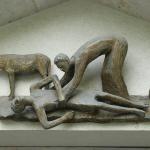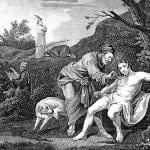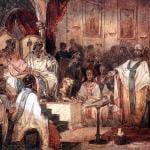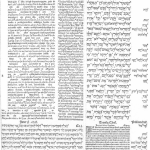Vatican City, Sep 10, 2014 / 08:04 pm (CNA/EWTN News).- The Vatican Secretariat of State established June 28 a Comittee of Presidency for the Pediatric Hospital “Bambino Gesù,” owned by the Holy See, thereby strengthening its control over the institution. The committee is composed of five members, including the president of the Board of Directors, and is entrusted with some of the Board of Administration’s tasks. Its members directly respond to the Secretary of State, who has the authority of changing or reshuffling members whenever he deems it opportune. The Bambino Gesù is known as the “Pope’s hospital,” and is among most important pediatric hospitals in the world. Founded in 1869 by the Duchess Arabella Salviati, the hospital was donated to Pius XI in 1924, with the aim of giving it a more stable future. While each subsequent Pope has supported the Bambino Gesù, it has faced difficulties since World War II. The management of the Bambino Gesù had been composed of the Secretary of State, the Board of Directors, the President of the Board of Directors, and the Statutory Auditors Committee. The Holy See, represented by the Secretary of State, appoints the president, the members of the Board of Directors, as well as the three members of the Statutory Auditors Committee and establishes the duration of the term, which typically is three years. With the recent decision, the Secretariat of State established a new body on the side of the president of the Board of Directors, thus adding another ring in the chain commands and de facto limiting the president’s powers. Cardinal Pietro Parolin, Secretary of State, communicated the decision to the president of Bambino Gesù, Giuseppe Profiti, in a letter dated June 28. The letter was accompanied by a “rescriptu ex audientia,” i.e. a document drafted after a papal audience, which established the Committee of Presidency and provided a regulation of the new body of the Bambino Gesù. Beyond the president Profiti, the members of the Committee are: Msgr. Luigi Mistò, secretary of the Administration of the Patrimony of the Apostolic See; Mariella Enoc; the banker Carlo Salvatori; and Duchess Maria Grazia Salviati, the descendant of the family who established Bambino Gesù and who is still a benefactor of the hospital. Each of these are already part of the Board of Directors, which is the general administrative body of the hospital, and whose decisions are submitted to the Secretariat of State. The regulation of the committee presents it as “a modality of organization through which the Board of Directors increases the effectiveness of its actions.” The committee will be in charge as long as the board of directors is, and every member of the Committee can be dismissed by the Secretary of State “in case of relevant and grave” matters. The committee can access all the Bambino Gesù's documents, can use all the structures of the hospital, and can also hire external consultants when needed. It meets monthly, and at least a week prior to any meeting of the Board of Directors, in order to “determine a close connection between the Committee and the Board.” The regulation also established that the committee helps the president in the choices about the attribution of competences and responsibilities to top managers of doctors, and also with regard to “extraordinary operations of relevant strategic operation which may have an impact on the value and/or on the patrimony of the Institution.” This way, the president of Bambino Gesù will not be able to back any financial operation without the “ok” of the committe of presidence. Despite some criticisms of the way he had managed the Pope’s hospital, Profiti was confirmed president of the Board of Directors Jan. 31. In March, the Vatican announced the hiring of the international firm Price Waterhouse for a due diligence check on Bambino Gesù: and it was after Price Waterhouse's audit that Cardinal Parolin decided to strengthen the state secretariat's control over the Bambino Gesù. Read more
















